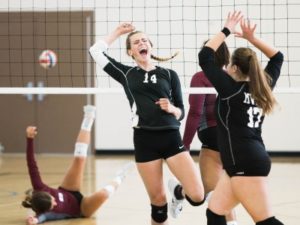Institutional Priorities and College Admissions
How do institutional priorities impact college admissions? We often hear parents say things like “my kid has a great GPA and test scores.” They mistakenly think that this gains entree to top schools. Many highly selective schools will use these first two data points to vet an application. This takes about 30 seconds. After this first round, the application is then ‘read’ by the admissions officers who often work individually or in groups to read an applicant’s profile in more depth, about 2-5 minutes. Colleges look for various criteria: activities, demonstrated leadership, personality characteristics that come through in essays, interests other than academics etc.
One thing that college admissions counselors are never privy to is something called institutional priorities that greatly influence which students are admitted to the school
Institutional priorities play a significant role in shaping a college’s admission process. These priorities are a reflection of the goals, values, and strategic plans of the institution, and they influence how the admissions office evaluates applicants. Here’s how institutional priorities can impact college admissions:
Diversity Goals
Many colleges and universities have specific priorities around diversity, equity, and inclusion. This can include diversity in terms of race, ethnicity, geographic region, socioeconomic background, gender, and academic interests. Schools may place additional weight on applicants from underrepresented groups or those who bring a unique perspective to campus life. This doesn’t necessarily mean diversity quotas, but it often guides the admissions committee to seek a student body that reflects a variety of experiences and identities.
Academic and Extracurricular Fit
Colleges often prioritize applicants who align with their specific academic strengths or institutional mission. For example, a university known for strong programs in the arts may prioritize students with demonstrated interest or achievement in creative fields. Similarly, a school with a strong emphasis on STEM might place higher value on students with strong science and math backgrounds. If the college places a premium on extracurricular involvement, applicants with leadership roles or notable achievements outside of the classroom could be favored.
Athletic Recruitment
Many schools prioritize athletes, particularly those that compete at the Division I or Division III level. Recruiting top athletes can bring prestige to a college’s sports programs, build school spirit, and even generate revenue (especially in schools with prominent athletic programs). For such schools, admissions may favor recruits who demonstrate strong athletic talent and are likely to contribute to the success of the school’s teams.
Legacy Status and Donor Connections
Some colleges and universities have a tradition of admitting students who are legacies—children or relatives of alumni. Legacy applicants may receive special consideration as part of an effort to maintain long-term relationships with alumni and encourage ongoing donations. Similarly, students who are connected to significant donors or who are from families with the potential to contribute financially to the institution might be given preferential treatment.
Geographic Representation
Institutions often seek to maintain a geographically diverse student body. Colleges may prioritize students from certain states, regions, or countries to ensure that they have a broad national or international representation. For example, if a college is looking to increase its presence in certain regions, applicants from those areas might be more competitive.
Classroom Capacity and Institutional Resources
Some schools have limited capacity in certain departments or majors and will prioritize applicants who are likely to fill areas where the institution has a shortage of students. For example, if a college is trying to increase enrollment in an underrepresented field such as engineering or nursing, applicants who demonstrate interest and aptitude in those areas may be given preference.
Financial Considerations (Yield and Full Pay Students)
Colleges and universities often prioritize applicants based on their likelihood of attending if admitted. This is called “yield.” Institutions may use financial aid strategies or offer merit-based scholarships to attract higher-yield applicants. Schools may also seek students who can pay full tuition, especially if the institution needs additional revenue or if it’s looking to offset financial aid packages for other students.
Academic Rigor and Institutional Prestige
Selective colleges may prioritize applicants from rigorous academic backgrounds, especially those from highly competitive high schools or who have demonstrated the ability to thrive in advanced coursework. A school’s institutional reputation might shape its admissions decisions as well, as prestigious institutions often look for students who will help maintain or enhance their academic standing.
Alumni Networks and Career Outcomes
Many colleges are focused on ensuring that their students are successful post-graduation, which can influence admissions policies. Schools with strong career services or a large alumni network may prioritize applicants who have demonstrated clear goals and aspirations that align with the institution’s career development resources. Applicants with a clear pathway to success after graduation can reflect well on the college’s reputation.
Mission and Institutional Values
Colleges often have a set of core values, such as a commitment to social justice, sustainability, community engagement, or innovation. Admissions teams may look for students whose passions and activities align with these values. For example, a college with a strong commitment to sustainability might prioritize applicants who have demonstrated leadership in environmental causes.
In summary, institutional priorities directly shape how admissions offices evaluate applicants. Understanding a college’s institutional goals—whether they’re about diversity, athletics, academic rigor, or financial considerations—can help applicants tailor their applications to resonate with what the school values most. It’s important for prospective students to research each institution’s mission and strategic goals, as this insight can offer a competitive edge in the admissions process.












